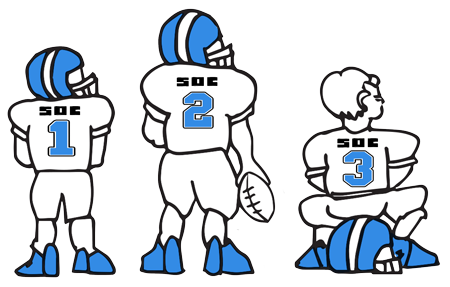ICFiles
SOC 2

Secure File Transfer Soc 2 starts at $1 per month
Defining and Calculating Amortization
General Business News
December, 2022
Get this Article Get this Article & Suite of Tools
Defining and Calculating Amortization
 When there's a question of the benefit that tangible or intangible assets provide businesses, there are many factors that must be weighed to make internal accounting procedures effective. Businesses must determine how the cost of business assets can be expensed each year over the asset's lifespan. Looking at how amortization and depreciation work, implementing both processes depend on the type of asset being expensed. There are noticeable differences for each method, including how to salvage value is considered, whether accelerated expensing is allowed, and how each type is expressed on financial statements.
When there's a question of the benefit that tangible or intangible assets provide businesses, there are many factors that must be weighed to make internal accounting procedures effective. Businesses must determine how the cost of business assets can be expensed each year over the asset's lifespan. Looking at how amortization and depreciation work, implementing both processes depend on the type of asset being expensed. There are noticeable differences for each method, including how to salvage value is considered, whether accelerated expensing is allowed, and how each type is expressed on financial statements.
Amortization
Amortization is an accounting practice of spreading the cost of an intangible asset over its useful life. Examples of intangible assets, according to the Internal Revenue Service's "Section 197 Intangibles," include goodwill, intellectual property such as trademarks, patents, and government or agency-granted permits or licenses. These are all assets that must be amortized over 15 years.
Based on IRS regulations, when it comes to determining how an asset is expensed over its useful life, amortization is most similar to the straight-line basis method of depreciation.
It's important to note that the timeframe of amortization is subject to interpretation. Examples, according to the IRS, include a 36-month amortization timeline for computer software because it's not categorized as an asset under the same IRS Section. Other examples not mandated to be amortized under a 15-year time frame include interests to land, business partnerships, financial contracts (such as interest rate swaps) or creation of media.
Depreciation
One of the main differences when it comes to depreciation is that it focuses on tangible or fixed assets and requires a certain percentage of its useful life to be allocated each year. Examples of assets that can be expensed include trucks for service calls, computers, printers, equipment for production, etc. Another important difference is that the asset's salvage value is deducted from the asset’s starting cost. The remaining balance (original cost - salvage cost) determines annual expensing amounts, which is divided by the asset's years of useful life.
Along with the above method of depreciation, also called "Straight-Line Method," there are other ways depreciation can determine how much is expensed annually and over the asset's useful life. For example, Declining Balance or Double Declining Balance methods are alternate ways businesses can depreciate their assets – some frontload the amounts to take advantage of accounting/tax rules to reduce their tax liabilities. Another way is to depreciate via Units of Production. This method pro-rates the level of an asset's expected use within a particular accounting period, on a per-unit basis, to determine how much the company can expense during a particular accounting timeframe.
When it comes to accounting for goodwill, according to a November 2020 electronic survey of CFA charter holders by the CFA Institute, respondents found that investors who see amortization used by companies still require investors' due diligence. Sixty-one percent of respondents said there need to be alternate ways to figure out if management is effective or not, and 63 percent said that amortization "distorts financial metrics."
When it comes to understanding and navigating the differences between amortization and depreciation, business owners and investors need to be well-versed in performing due diligence to ensure compliance.
Sources
https://www.irs.gov/pub/irs-pdf/p535.pdf
https://www.cfainstitute.org/en/research/survey-reports/goodwill-investor-perspectives
Get this Article Get this Article & Suite of Tools
These articles are intended to provide general resources for the tax and accounting needs of small businesses and individuals. Service2Client LLC is the author, but is not engaged in rendering specific legal, accounting, financial or professional advice. Service2Client LLC makes no representation that the recommendations of Service2Client LLC will achieve any result. The NSAD has not reviewed any of the Service2Client LLC content. Readers are encouraged to contact their CPA regarding the topics in these articles.
Dynamic Content Powered by Service2client.com
SEO Content Powered by DynamicPost.net






